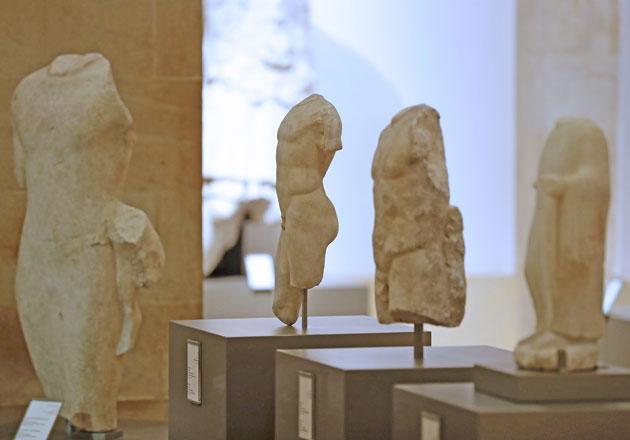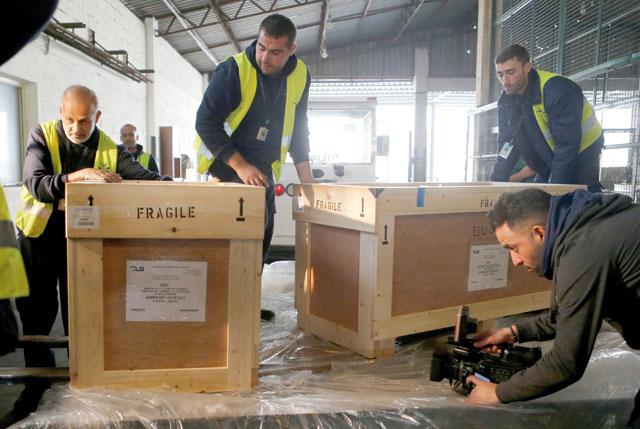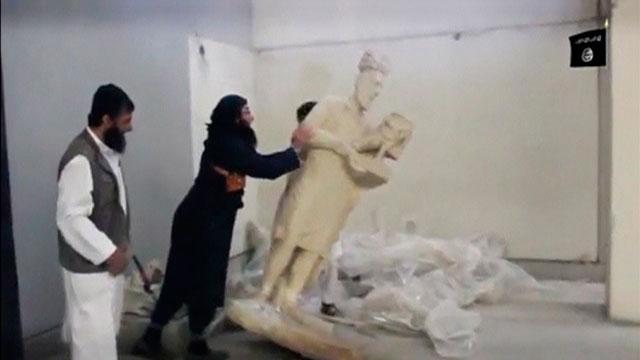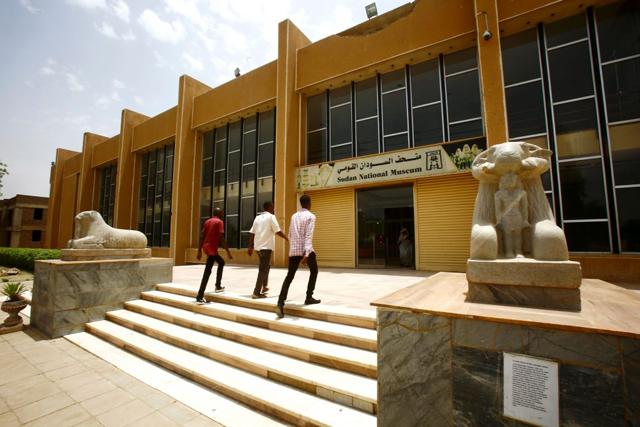You are here
Ancient statues return to Lebanon as war on smuggling intensifies
By Reuters - Feb 03,2018 - Last updated at Feb 03,2018

This photo taken on Friday shows repatriated marble sculptures dating back to 4th-6th centuries on display during a ceremony at Beirut National Museum in the Lebanese capital (AFP photo)
BEIRUT — Ancient sculptures that were missing for decades after being stolen during Lebanon’s civil war are to go on display in Beirut thanks to a global fight against antiquities smuggling that has been stepped up since wartime looting in Iraq and Syria.
The five marble statues were among a haul of hundreds that Lebanese militiamen took from a storehouse in 1981, some of which are only now emerging onto the shadowy global arts market and even into the world’s greatest museums.
Three of the five sculptures unveiled at a ceremony in Beirut on Friday were spotted in New York’s Metropolitan Museum — where they were on loan from a private collector — by a curator who identified them using Art Loss, an online register of stolen artefacts.
One of the people instrumental in getting them sent back to Lebanon was Manhattan Assistant District Attorney Matthew Bogdanos, an Iraq war veteran who led the investigation into looting at the national museum in Baghdad during the chaos of the US-led invasion to topple Saddam Hussein.
Outrage at looting there and in Syria, and fear that art trafficking was funding militant groups, has driven countries to work together to stop it, said Bogdanos, who was in Beirut on Friday for a ceremony to unveil the statues.
“It has resulted in greater attention, greater scrutiny and greater resources, all of which we desperately need in order to fight such an entrenched global network,” Bogdanos, whose office has recovered thousands of stolen antiquities in recent years, told Reuters at the ceremony at Beirut’s National Museum.
One of the other statues was identified last year by a gallery in Germany, which noticed it on the Art Loss register. The fifth was seized in a container entering Lebanon’s port of Tripoli last month.
Archaeologists excavated all the statues in the 1960s and 1970s in Sidon at the Temple of Eshmoun, a god of healing.
They were carved between the 6th and 4th centuries BC, when Lebanon’s Phoenician civilisation was ruled by the Persian Empire but influenced by Greek art and culture.
One of the statues, a bull’s head, was from the capital of a pillar in the temple. The other statues, of youths and children, included one dedicated to the temple by fond relatives in thanks for the recovery from illness of their child.
Related Articles
BEIRUT — A marble bull’s head made 2,400 years ago for a Phoenician temple and looted during Lebanon’s civil war arrived in Beirut on Friday
Daesh members in northern Iraq have destroyed a collection of priceless statues and sculptures dating to the ancient Assyrian era, according to a video published online.
AMMAN — Amid one of the world’s largest humanitarian crises, Sudan’s civil war has brought another devastating consequence: the potential ex




















